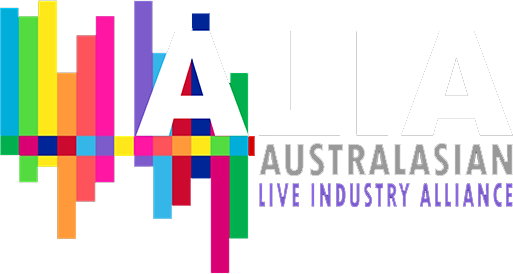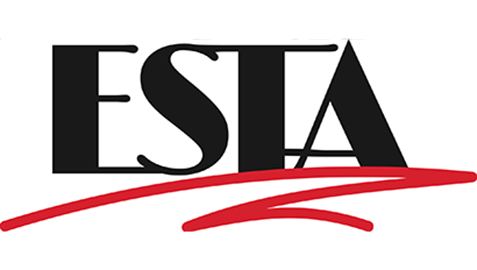ESTA’s Technical Standard program announces ten draft standards now in public review: Six plus a suite of four. Ten public review action items came out of the recent October Technical Standards Program working group meetings held in Westlake, TX, where over 180 attendees across 10 discreet working groups came together to move draft standards in development another step forward. All of these public reviews will end on 12 December.
Two standards for reaffirmation from the Fog & Smoke Working Group
ANSI E1.5-2009, Theatrical Fog Made With Aqueous Solutions of Di- And Trihydric Alcohols
This standard, last reaffirmed in 2018, is being considered again for reaffirmation. This standard describes the composition of theatrical fogs or artificial mists that are not likely to be harmful to healthy performers, technicians, or audience members of normal working age. It is limited to those fogs and mists made from a solution of water and one or more dihydric or trihydric alcohols, and is intended to be applied in theatres, arenas, and other places of entertainment or public assembly.
ANSI E1.29-2009, Product Safety Standard for Theatrical Fog Generators that Create Aerosols of Water, Aqueous Solutions of Glycol or Glycerin, or Aerosols of Highly Refined Alkane Mineral Oil
This standard, also last reaffirmed in 2018, is being considered for another reaffirmation. The standard is intended to help guide product safety testing laboratories in evaluating fog-making equipment for design or construction defects that might create unacceptable hazards. It is based on UL 998 – 2006, Humidifiers, with modifications. Products covered are theatrical fog generators intended for use in professional theatrical entertainment, film and video production, theme parks, and fire safety training.
One standard for reaffirmation from the Floors Working Group
ANSI E1.34 – 2009, Measuring and Specifying the Slipperiness of Floors Used in Live Performance Venues
This standard, last reaffirmed in 2019, is being considered for another reaffirmation. It describes means of measuring and specifying the slipperiness of floor surface materials used by performers in live entertainment venues. The standard is not intended to be applied to normal walking and working surfaces, but only to those floor surface materials used by actors, dancers, and other similar artists when rehearsing or performing.
One new draft standard from the Event Safety Working Group
BSR ES1.17, Event Safety – Event Lighting & Electrical Safety
This standard provides guidance for the application, assessment, and documentation of safe electrical working practices during the installation, show, and dismantling of special event electrical systems and equipment. It includes consideration of the identification and assessment of specific event electrical hazards, and the potential impacts of unsafe electrical working practices. It also provides guidance on minimum requirements for egress lighting systems used for special events.
One revised standard and five new draft standards from the Control Protocols Working Groupp> BSR E1.11, USITT DMX512-A
BSR E1.11 describes a method of digital data transmission for control of lighting equipment and accessories, including dimmers, color-changers, and related equipment, intended to provide interoperability at communication and mechanical levels with controllers and controlled equipment made by different manufacturers. It is an update and expansion of the protocol developed by the United States Institute for Theatre Technology, Inc. and published as “DMX512/1990, Digital Data Transmission Standards for Dimmers and Controllers.” This revision has been updated to accommodate changes in technology and recommended industry practice.
BSR E1.68 Recommended Practice for Evaluating DMX512 (ANSI E1.11) Interoperability
This standard is a recommended practice for evaluating DMX512 (ANSI E1.11) interoperability, to help minimize problems in the field associated with violations of critical elements of the standard. The recommended practice will not attempt to assure 100% compliance with all requirements in the standard; it will focus on those requirements that have been proven to make interoperability unlikely or unreliable when not followed.
BSR E1.73, parts -1, -2, -3, and -4 (Uniform Device Representation)
The BSR E1.73 suite provides a framework by which manufacturers of entertainment equipment can describe controllable and visualizable devices in a digital format. The framework will enable the provision of descriptive information about devices and their state, including both parameters and physical properties, and the metadata needed to describe them. A standard method will be provided to map controllable parameters to existing control endpoints. The current draft version includes the first four parts of the suite: E1.73-1 is the Core Document; E1.73-2 contains the Core Definitions for E1.73-1; E1.73-3 contains Intensity/Color Definitions for E1.73-1; E1.73-4 contains Motion Definitions for E1.73-1.
All of these documents are available from ESTA’s TSP Public Review Documents download page, found at tsp.esta.org/tsp/documents/public_review_docs.php. Return the public review form and any comments you may have before December 12, 2023.




















































